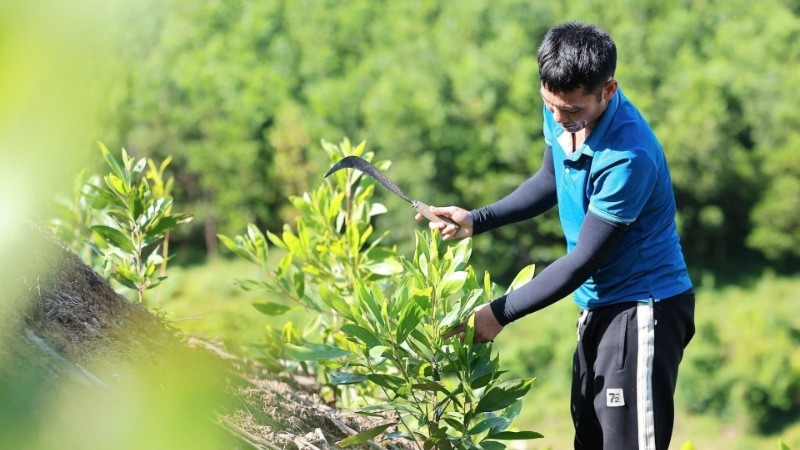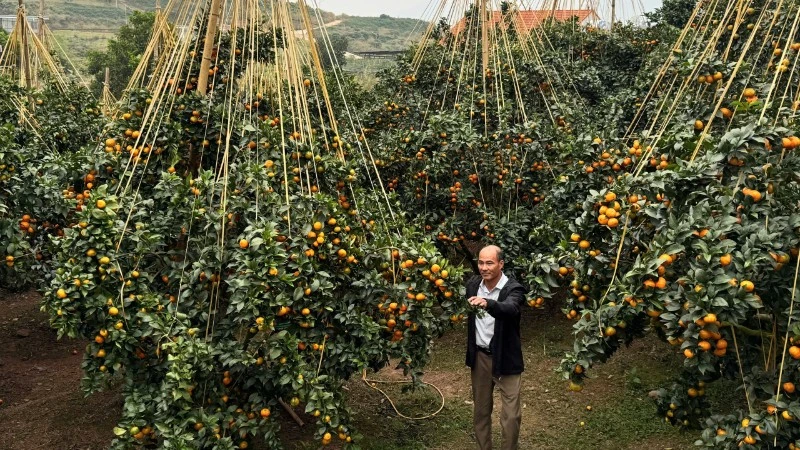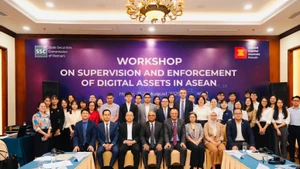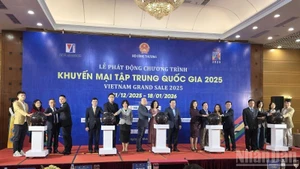More than a strategic framework, the scheme represents a nationwide call to action for the agricultural sector and Viet Nam’s commitment to the world in addressing climate change and advancing green and sustainable agriculture.
A turning point for the crop sector
Speaking at the launch conference for the scheme, Huynh Tan Dat, Head of the Department of Crop Production and Plant Protection (Ministry of Agriculture and Environment), stated that by 2035, the crop sector aims to cut at least 15% of greenhouse gas emissions compared with 2020 levels. In parallel, the sector will develop and promote a “Low-Emission” trademark for its key products.
By 2050, the entire sector targets 100% of major crop-growing areas to adopt sustainable cultivation practices. Viet Nam aims to become a regional pioneer in climate-responsible agricultural development, building a green competitive advantage in the global market and contributing positively to the net-zero emissions goal pledged at the 26th UN Climate Change Conference of the Parties (COP26).
In the context of climate change and increasingly stringent environmental requirements from import markets, shifting agriculture towards low emissions is an inevitable trend. Transforming crop production from traditional methods to modern, sustainable, and responsible practices will generate higher economic value. This forms the basis for developing a “green competitive edge”, helping Vietnamese agricultural products access high-value markets such as the European Union (EU), Japan and North America.
Not only does this bring direct economic benefits — where selling prices may increase by 10–25% compared with traditional cultivation — but if the Scheme is effectively implemented, emissions could be reduced by an estimated 8–11 million tonnes of CO₂ equivalent per year. This will strongly support national emission-reduction objectives and enhance climate resilience.
From 2025 to 2035, the crop sector will focus on a number of key crops with strong emissions-reduction potential.
Nguyen Thi Thu Huong, Deputy Head of the Department of Crop Production and Plant Protection, noted that the sector has proposed 59 specific models to be implemented across 34 provinces and cities. These include low-emission rice cultivation, rotation systems such as rice–fish or shrimp, rice–maize or peanut, and specialised models for maize, cassava and vegetables. Other models target perennial crops (such as tea, coffee, pepper, cashew, citrus fruits, durian, longan and lychee).
In addition, there are agroforestry models, circular agriculture models, models for waste reuse and biochar production, as well as the conversion of land previously used for two rice crops a year to upland crops. Each province is expected to develop between one and three models suited to its local conditions and offering high emissions-reduction potential.
Ensuring agricultural infrastructure
Le Chi Thien, Deputy Director of the Department of Agriculture and Environment of Dong Thap Province, said that the province has pioneered 21 high-quality and low-emission rice production models, helping reduce water use by 20–30%, cut costs by 15% and significantly lower methane emissions.
However, the implementation of low-emission production still faces challenges, including limited investment resources, a lack of incentives for enterprises, insufficient green-credit policies and the absence of detailed technical guidelines for specific crop groups.
Irrigation infrastructure must be comprehensively upgraded to reduce emissions. Without the ability to drain water promptly and proactively, advanced cultivation techniques cannot be applied. Investment in irrigation is therefore the “hard condition” for enabling the transition.
Cao Duc Phat, former Minister of Agriculture and Rural Development (now the Ministry of Agriculture and Environment)
The crop production sector accounts for around 80% of total agricultural emissions, largely due to the practice of continuously flooded paddy cultivation, which generates methane. To effectively implement emissions-reduction models, an irrigation system with sufficient capacity to actively drain water and regulate flows is essential.
Cao Duc Phat, former Minister of Agriculture and Rural Development (now the Ministry of Agriculture and Environment) said that irrigation infrastructure must be comprehensively upgraded to reduce emissions. Without the ability to drain water promptly and proactively, advanced cultivation techniques cannot be applied. Investment in irrigation is therefore the “hard condition” for enabling the transition.
He added that to support localities in rapidly implementing the scheme, the Department of Crop Production and Plant Protection must urgently develop and issue technical packages and training materials for low-emission cultivation.
Dinh Thi Phuong Khanh, Deputy Director of the Department of Agriculture and Environment of Tay Ninh Province, shared: “The Ministry of Agriculture and Environment needs to quickly establish criteria for crop-structure transformation.” To ensure effective implementation, the ministry is strengthening its institutional framework, reviewing, revising and supplementing relevant documents to incorporate greenhouse-gas-reduction requirements into strategies, plans, programmes and sectoral schemes.
At the same time, the ministry is developing a set of criteria for low-emission crop cultivation, as well as preferential policies and support mechanisms. It will enhance inspection and field monitoring to promptly address local obstacles. Technical guidance documents, reporting templates and periodic monitoring-evaluation procedures for emission-reduction results will also be issued.
According to Deputy Minister of Agriculture and Environment Hoang Trung, developing a comprehensive monitoring and measurement system is a complex challenge. The ministry has assigned affiliated research institutes to lead this effort. Once the monitoring-measurement procedures are established, the agriculture sector will pilot carbon-credit trading and gradually integrate into the carbon market. The ministry has instructed the Department of Climate Change to pilot domestic carbon-credit trading before 2028, as a basis for participating in international carbon-credit exchanges.
















